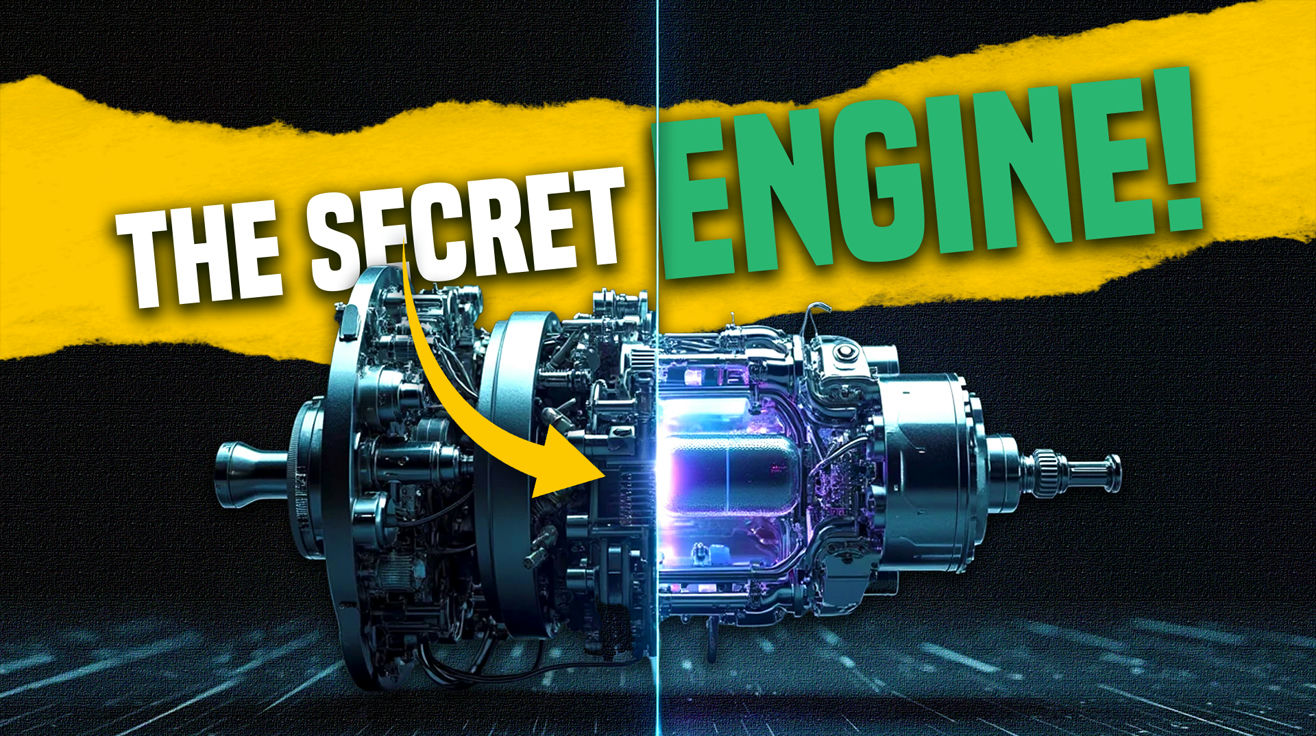Your car engine is basically a fancy explosive device that wastes three-quarters of its energy heating up the atmosphere. Now imagine swapping all that mechanical chaos for something with zero moving parts that converts fuel straight to electricity.
That’s the promise of solid-state engines, and while the tech remains experimental, the potential is staggering. These systems could revolutionize everything from drones to power grids, assuming the wild efficiency claims survive real-world testing.
10. What Actually Is a Solid-State Engine?

If you’re tired of engines that break down constantly and waste most of their fuel, solid-state technology offers a radically different approach. Traditional engines are all pistons, valves, and controlled explosions—like using a typewriter when laptops exist. Solid-state engines ditch every moving part and convert fuel to electricity in three steps: burn fuel for heat, convert heat to light, then transform light into power.
Your car engine wastes over 75% of its fuel warming the atmosphere, while these solid-state systems claim 80% efficiency. Mechanical maintenance becomes irrelevant when there’s literally nothing to break.
The idea of no moving parts in a powertrain, instead relying purely on clever energy conversion, fits right in with other wild new car inventions that are pushing the boundaries of automotive engineering.
9. The Three-Step Energy Conversion Process

Mechanical engines create power through controlled explosions, but solid-state systems eliminate that chaos entirely. The process works in three elegant steps: fuel burns to create heat, specialized materials convert heat into intense light, and photovoltaic cells capture that light to generate electricity.
This eliminates the mechanical complexity that makes traditional engines maintenance nightmares. No pistons seizing up, no timing belts snapping, no oil changes—just fuel in, electricity out. The simplicity makes conventional engines look like steam-powered contraptions.
8. Energy Density That Threatens Battery Dominance

Solid-state engines pack 10-15 kilowatt-hours per kilogram while batteries struggle to hit 0.3 kWh/kg. That’s not competition—that’s a complete paradigm shift in portable power.
Picture a device the size of a shoebox generating enough electricity for your entire house during peak demand. The implications for electric aircraft, grid storage, and portable electronics are massive, though these remain manufacturer claims from experimental technology rather than independently verified performance data. If you’re planning future energy investments, these numbers demand serious attention.
7. Sodium Technology: Streetlights Meet Energy Revolution

Caught staring at those yellow streetlights from the 1990s? That sodium vapor technology holds the key to next-generation energy conversion. When heated properly, sodium produces light that’s reportedly 3000 times brighter than direct sunlight.
Match that intense, specific wavelength with semiconductors precisely tuned to sodium’s frequency, and the energy transfer becomes remarkably efficient. It’s like finally finding the perfect key for a lock instead of fumbling through your entire keychain—the precision makes all the difference in conversion rates.
6. Materials Science: Using Familiar Components Cleverly

These engines use existing semiconductors like germanium carbide and gallium arsenide to achieve revolutionary efficiency gains. These components are already used in high-efficiency solar cells and telecommunications equipment, with the innovation lying in application methodology rather than material composition.
Instead of waiting decades for some miracle compound to be invented, developers are combining existing technologies in ways nobody previously considered. Sometimes the most revolutionary solutions hide in plain sight, waiting for the right combination of engineering insight and market timing. And sometimes, transformative progress comes from reimagining what’s already in front of us, just like these vehicles that changed the world.
5. Reality Check: Engineering Challenges Remain Massive

Promising lab results often crash into manufacturing reality, and solid-state engines face significant hurdles. Early prototypes use quartz components that probably won’t survive real-world punishment, and upgrades to sapphire sound promising until you see the manufacturing costs. The sodium fuel cycle theoretically regenerates back to table salt, but turning “theoretically” into “commercially viable” is where most promising energy technologies meet their demise.
The transition from laboratory demonstrations to scalable commercial products in energy conversion typically takes 10-15 years, assuming the fundamental physics actually work as claimed. Investors should prepare for a marathon, not a sprint to market.
4. Competition Drives Innovation Forward

Multiple companies are chasing this technology with radically different approaches and varying levels of success. While some focus on larger systems claiming 70-80% efficiency rates, others like Meso are miniaturizing the technology down to chip scale. Meso’s approach reportedly achieves 13% efficiency—not spectacular compared to the larger claims, but miniaturization opens entirely different application possibilities.
This isn’t a winner-take-all technological race where only one approach survives. Different engineering solutions will likely dominate different market segments, and the competition should accelerate development while driving manufacturing costs downward. Market diversity creates opportunities for multiple winners across various applications.
3. Fuel Cells: The Established Benchmark

If you’re wondering what solid-state engines are up against, fuel cells already deliver proven 40-60% efficiency in commercial applications. They represent established technology with real market presence, not experimental promises. Solid-state engines must beat both the performance and reliability of mature fuel cell systems.
The advantage solid-state engines claim is operational simplicity—one device instead of multiple components. But simplicity without proven performance remains just an engineering curiosity.
2. Capturing Waste Heat: The Efficiency Holy Grail

Wasted energy from conventional engines could power entire neighborhoods, but solid-state systems promise to capture every thermal unit.
The theoretical ideal system would exhaust gas at room temperature after surrendering nearly all thermal energy to the conversion process, though building such a system remains the multi-billion-dollar engineering challenge.
1. Timeline: Tempering Expectations With Reality

Independent verification remains absent despite bold efficiency claims from manufacturers. Commercial prototypes don’t exist outside laboratory settings, and manufacturing scalability remains completely unknown territory.
Revolutionary energy technologies have a documented history of overpromising and underdelivering on both timeline and performance metrics. The companies making these ambitious claims need to demonstrate their systems work reliably, cost-effectively, and at commercial scale before disrupting established energy markets. History suggests skepticism serves investors better than enthusiasm in emerging energy tech.




























